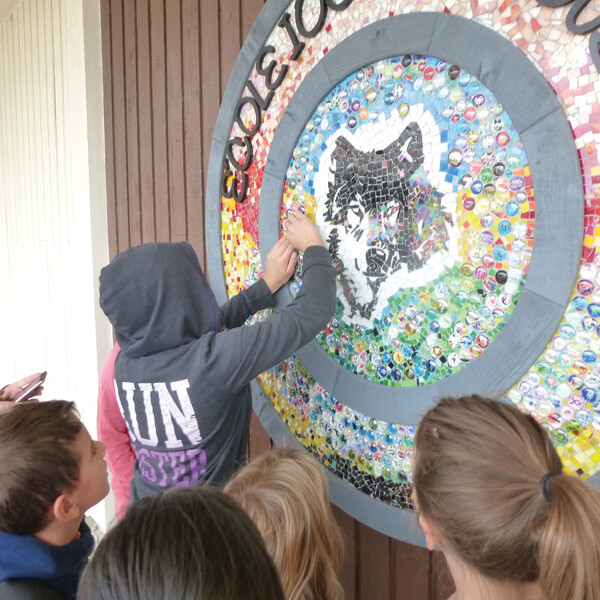Early in my career, I was appointed principal at a small public school located in a remote First Nations community in rural British Columbia. Many of the students and their families distrusted the education system, in large part because for years—and only a generation ago—community youth had been forced to attend a residential school. Many of the grandparents and guardians of my students had been forcibly taken away from their families and required to abandon their traditional culture and language.
The idea of feeling connected to the local school was foreign to many of these families. Not surprisingly, nothing in the school's public spaces or displays symbolically connected the school with the surrounding community.
I knew something was needed to bridge the cultural gap between the school and the community. Art can help solidify feelings of belonging because it helps youth make sense of the world and express their feelings. Seeking to link the backgrounds and cultures of all our students and create a sense of belonging for everyone, I worked with artists such as Marina Papais, a Canadian mosaic artist, to create a schoolwide mosaic project that would become part of the building's entryway. Since then, as I've worked in the administration of several schools, I've organized other art projects that integrate First Nations symbolism. In each, I've seen the power of such installations to create a sense of welcoming for the community.
To build the mosaic, all participants—students, teachers, parents, and community members—were given a small piece of glass. They could draw whatever they wanted on the glass; in this way, the ideas and individuality of each person were celebrated. We worked with students to generate ideas for their glass stones. In workshops I conducted throughout the school, students brainstormed ways in which we could enhance a sense of belonging. Each student shared one thing that was important to him or her; this could then be what the student put on his or her glass stone.
Once their stones were completed, the students could put them into the mosaic wherever they wanted, finding their way in the community art project just as they might in our real community. Older students then filled in the areas around each person's glass stone to create the overall picture, integrating ideas such as the colors from the First Nations medicine wheel.
The finished project was a 5" × 5" glass mosaic of more than 550 stones. The mosaic was mounted at the school's entrance in time for National Aboriginal Day on June 21, 2016. We held an assembly to celebrate the installation of the piece, with First Nations dancing and drumming performed by the students. The ceremony helped to recognize our coming together as a community and remind all participants that their ideas were valued.
In the ensuing months, students could be seen bringing friends and family to the mosaic, even after school hours, to point out the glass stone he or she contributed. Students seemed to understand how their small stone helped to create a larger whole, something lasting and welcoming. As one student reflected, "It feels like a part of me is going to be in the school forever."
* Elaine Radmer, assistant professor of educational leadership at Gonzaga University, contributed to this article.
A mosaic featuring hundreds of student-decorated glass stones helped present a welcoming culture at a First Nations school in rural British Columbia.
Photos by Mikel Brogan









